
How T-Mobile used Power Apps to adapt to the COVID-19 pandemic — and define a new path forward
As the novel coronavirus swept the United States this past spring, a frantic new reality took hold — one where phrases like “shelter in place” and “6 feet away” became commonplace. Many companies – even those deemed “essential” — were suddenly scrambling for a game plan to respond to the pandemic.
But T-Mobile — the third largest wireless carrier in the U.S. — was among the rare crop of companies galvanized by not only a quickly developed plan, but the infrastructure with which to execute it.
Deemed an essential service, the company needed to prioritize the health of its employees, pare itself down to about 20 percent of its retail operation, communicate extensive changes to a nationwide workforce, and create a safer, more-informed, properly staffed retail environment.
In a matter of hours, the Bellevue, Washington-based wireless company’s workforce was doing exactly that, adapting to the new normal via a COVID-19 mobile app that would carry the company through the crisis.

T-Mobile quickly reconfigured its retail stores to prioritize the safety of employees and customers during the coronavirus pandemic.
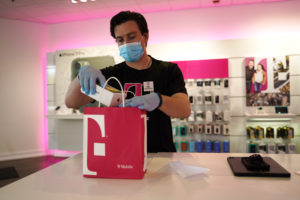
The company’s new staffing app gives managers real-time information about which employees are available to work.
Business analysis managers Greg Soto and Matt McDermott – both of whom sit in T-Mobile’s Northeast Regional Business Planning organization – quickly produced a solution using Power Apps, a “low-code” method for building professional-grade applications using simple, drag-and-drop functionality and pre-built templates.
The result was the COVID-19 Employee Roster Mobile App, an easily updateable app that uses Power BI to unify detailed information from numerous sources, yielding dashboards and reports that provided T-Mobile team members with constant staffing insights via their handheld devices.
“From the first piece of code to a rough draft, it all took about 24 hours,” explains Soto. “From there, it took one more day to iron out requests and notes, and then we took it live.”
T-Mobile announced early on it would take steps to maintain income for hourly employees, and their paychecks were dependent on constant, accurate updates regarding who was working in a store, who was “on the bench” (aka willing to work, but without a physical location) and who had been assigned to a virtual retail location.
“The first screen you see asks what region you’re in,” explains McDermott. “If I were a district manager, I’d select my district and then hit the ‘new district details’ button. The next page takes you to a snapshot of every single store in your district, with all that detailed information summarized for you. So on one page, you can see how your entire market is laid out, and you can pull employees that are on the bench to stores that need them. Then you can click on a store, and edit that store specifically using detailed, automated, live, real-time information in a simple, easy-to-use interface.”
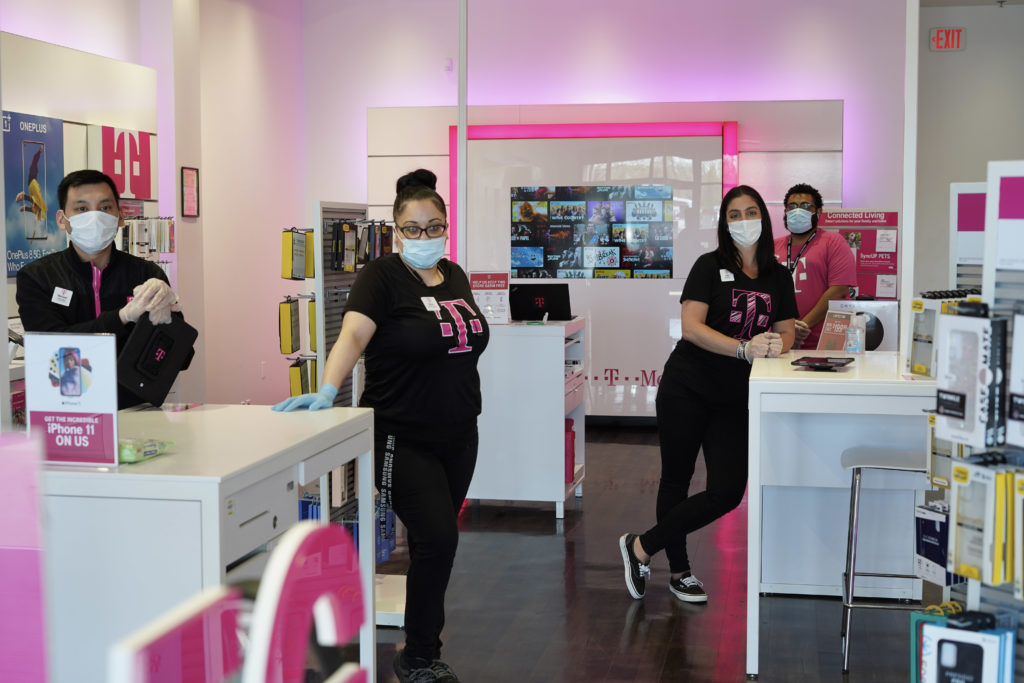
Each day, retail employees can opt into or out of the opportunity to work, giving store managers a real-time view into their availability.
According to Douglas Allbright, a T-Mobile retail store manager in Syracuse, New York, the app’s arrival was a godsend. “Right around March 15, T-Mobile made the call to close my location in a mall,” he recalls. “We began operating out of a corporate store in Syracuse, combining three teams into one store — it was a very chaotic time. Suddenly, the challenge was to manage scheduling while simultaneously prioritizing everyone’s health and safety. To do that, people needed to opt in or opt out, often on a daily basis.”
The app protected employees’ privacy because it asked only whether they were available and able to work, not details about their health. And only managers like Allbright could see how many employees were available for each store and virtual retail center.
“We could suddenly see where everyone was at a glance, and share a single resource tool — I can’t say enough about how useful that was,” Allbright explains, adding that T-Mobile’s deployment of similar low-code apps in past months had laid the groundwork for its adoption. “Since we had used Power Apps previously, overnight we were able to go to the app.”
Another important benefit of the app was that when the public needed T-Mobile, they were there.
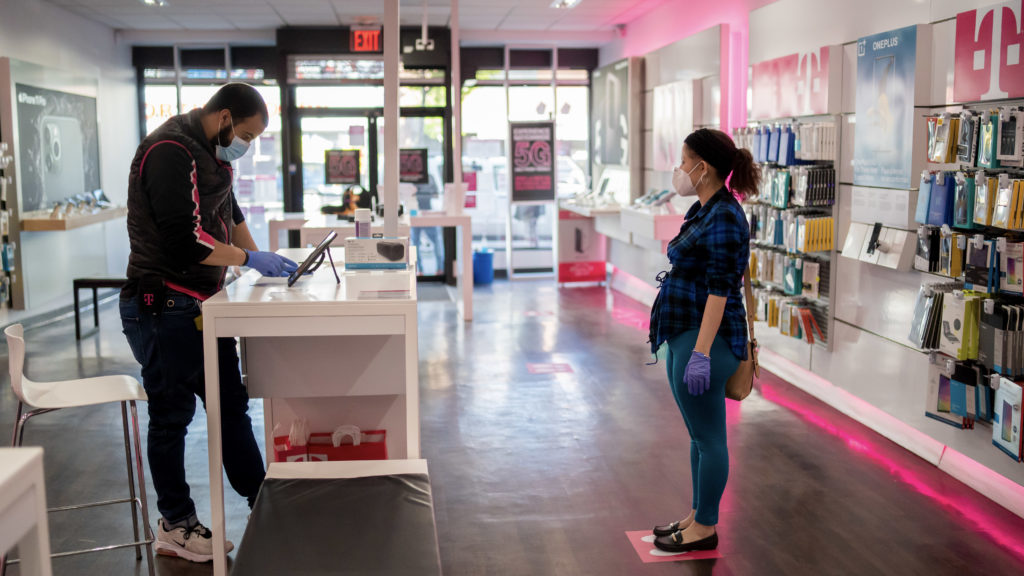
Retail customers are required to wear masks or face coverings and maintain physical distance.
“The first week, keeping that first wave of stores open, customers were coming in saying, ‘Thank you so much, thank you for being here,” Dave Holt, a district manager overseeing the Jersey Shore, recalls with pride. “We were assisting nurses, doctors, people who needed phones to connect to loved ones.”
One customer story touched him the most, Holt says.
“We had been open for two days when a nurse came in,” he remembers. “She had pre-paid service with another provider, but her phone wasn’t functioning, and she could not find one of their open stores. We did some troubleshooting on her existing phone and made sure she had communication at such an important time. We didn’t sell her anything, didn’t activate anything — she was just thankful we were there and able to help her in a safe, healthy way.”
As March rolled into April and then May, the app continued to keep track of the self-reported availability of each employee and their assigned hours. Holt also noticed, as the weeks of public isolation passed by, that keeping stores open had become important to some employees’ well-being.
“I have somebody on my team who suffers from depression,” he explains. “They came to me and said, ‘Dave, I’m really thankful that I’m able to get into a store and get working. Because if I had spent this time sitting at home, it would have made my situation much worse.’ It’s good to hear that not only did we help customers, but staying open also helped people get through a very difficult situation.
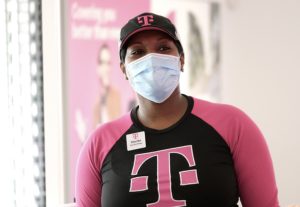
T-Mobile’s COVID-19 Employee Roster Mobile App allows managers like Shanika to navigate scheduling while prioritizing health and safety.
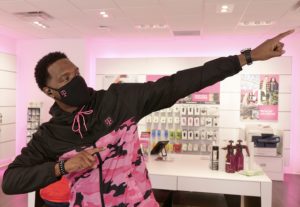
The ability to safely keep working helps employees maintain financial and emotional stability during the pandemic.
Now – knock on wood – many states are moving on to the next phase in the pandemic recovery. Allbright’s mall location recently reopened, and so are many other nationwide T-Mobile stores.
Having served its purpose, the code will now be recycled, giving birth to other applications organizing store re-openings, addressing safety concerns and as a contingency against similar events that could warrant sudden emergency measures. Of course, there will always be some contingencies no company can anticipate — but T-Mobile believes it is better prepared with nimble, adaptable technology that can be activated and deployed in a matter of hours.
“T-Mobile’s focus on protecting the health and safety of its employees and customers through technology is a powerful example of what it means to accelerate digital transformation at speed and scale,” says Jean-Philippe Courtois, Microsoft EVP and president of Global Sales, Marketing and Operations. “These early innovations are now informing how we think about agility and resilience as we emerge from crisis mode into reimagining businesses and inspiring economic reset.”
As the new normal emerges, T-Mobile will once again look to those innovations, and the accessible, dependable benefits of Power Apps to craft its game plan.
“PowerApps offers the ability to build enterprise-level applications extremely fast and at a very low cost, and see strong ROI for the development cost,” explains Soto. “Standard app development would not have offered the opportunity to stand up an app fast enough to meet the needs of our business.”
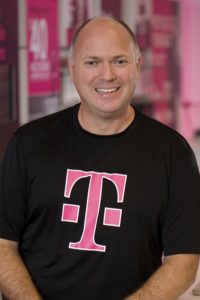
Jon Freier.
“We’ve learned a lot over the last few months, and if that knowledge informs our Power Apps in the future, we’ll be much better off,” adds Holt. “This has become our go-to. Every day now, I wake up using Power Apps, and I go to bed using Power Apps.”
As for the long-term benefit of the COVID-19 app itself, it might just be that T-Mobile has shown its employees that, in times of crisis, the company has the proper mindset and technology to take care of them — and empower them to take care of others.
“T-Mobile’s COVID-19 Employee Roster Mobile App was developed to help us address a critical need during an unprecedented and uncertain time,” says Jon Freier, T-Mobile’s executive vice president of Consumer Markets.
“As we needed to ensure we kept our customers connected, we also focused on the health and safety of our teams. So our incredible Operations and Business Planning team created a tool that would provide us with real-time information on employee availability and allow us to best staff our stores and continue to be there for customers. These types of tools enable flexibility, allow us to be nimble and help us turn on a dime when we need to – no doubt we’ll continue to invest in building them.”
Top photo: T-Mobile employees keep their distance and wear face coverings to protect customers and each other. (Photos courtesy of T-Mobile)
